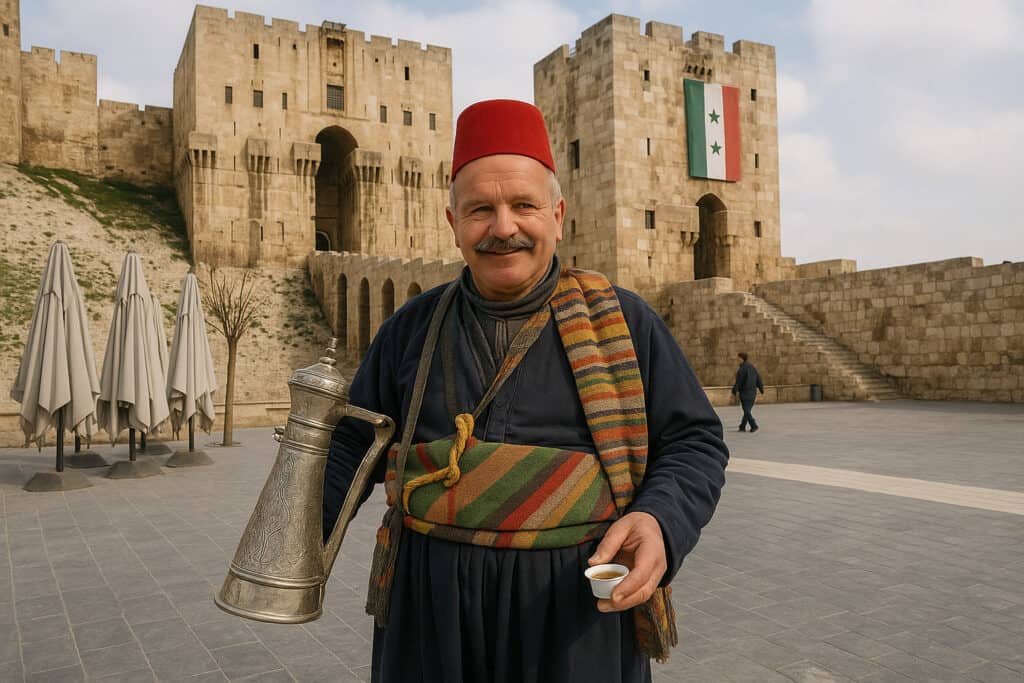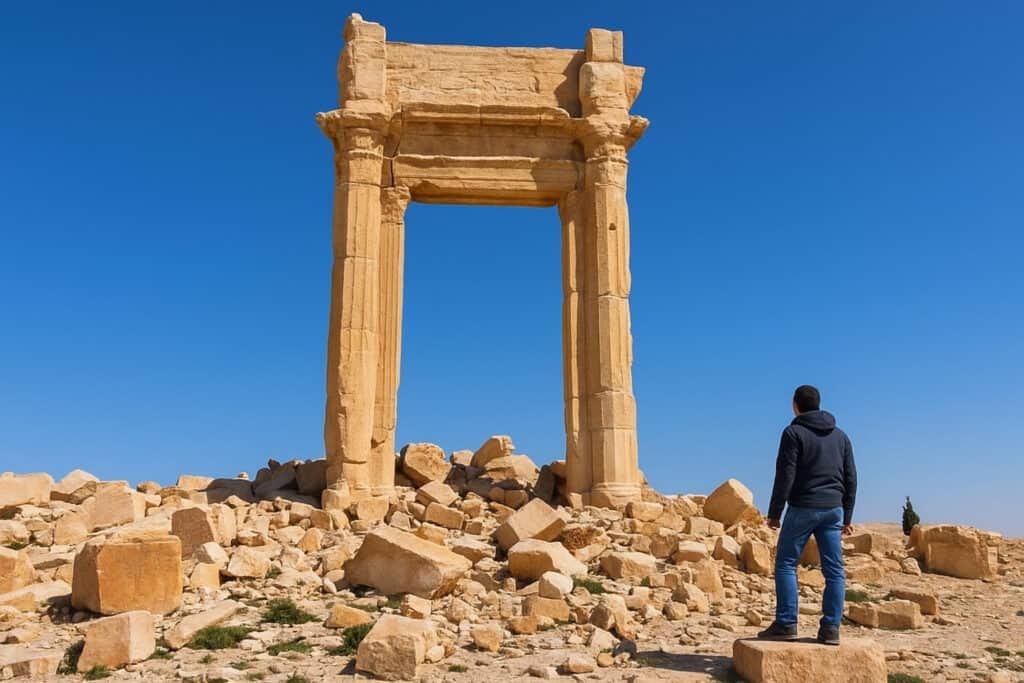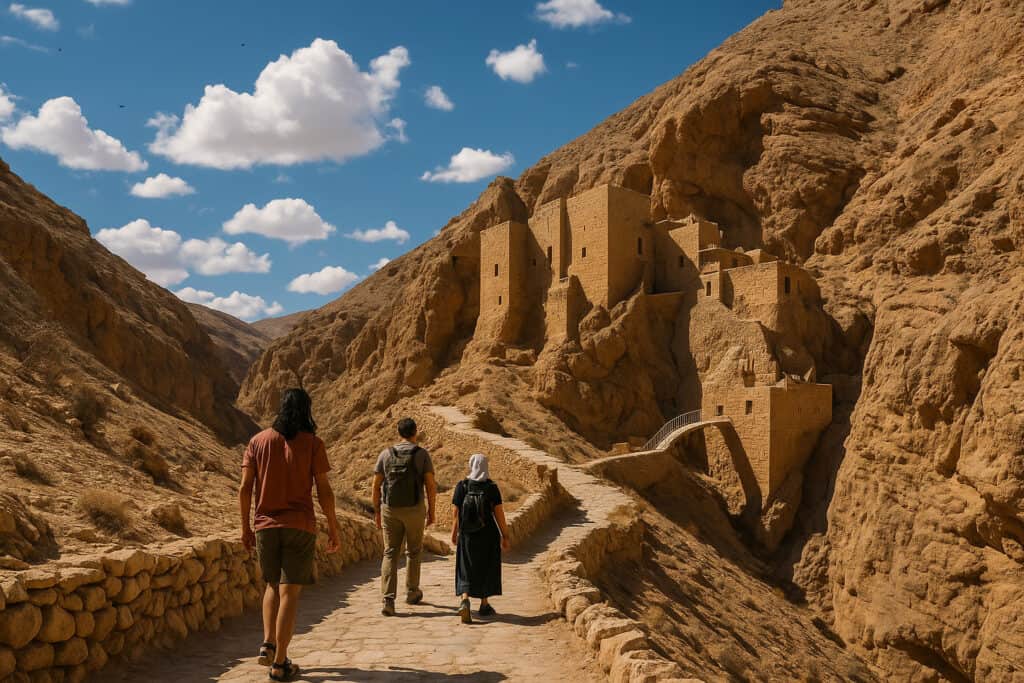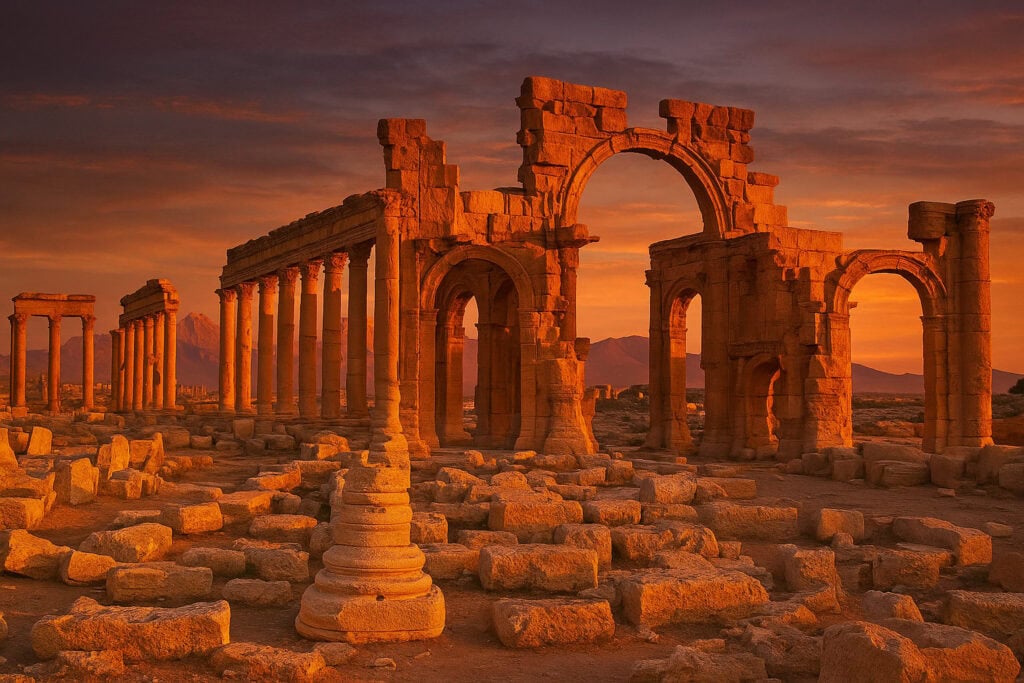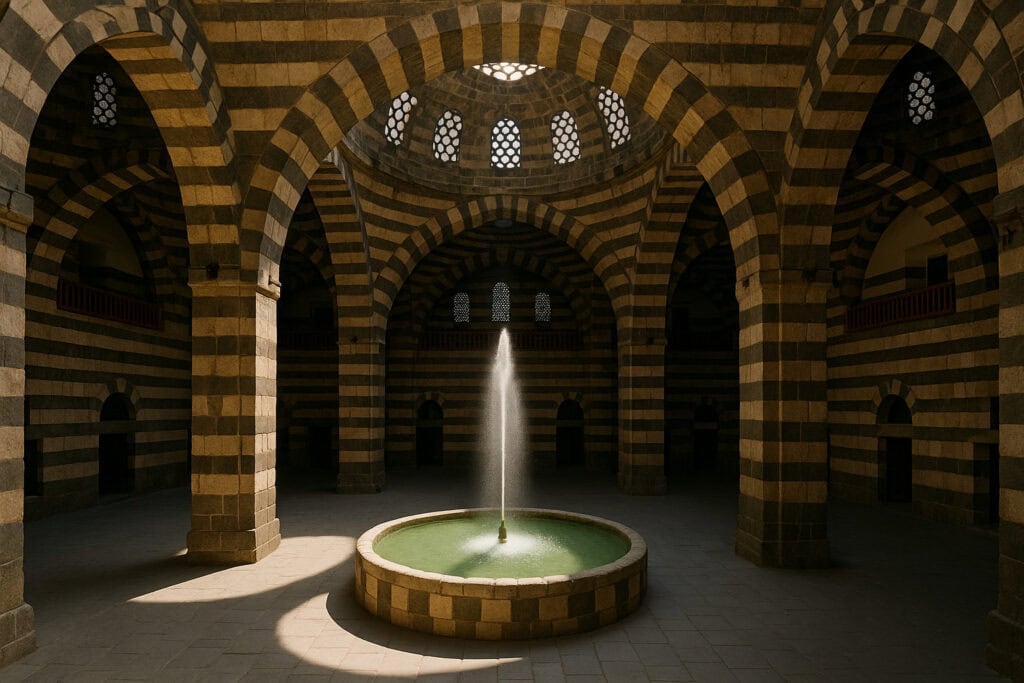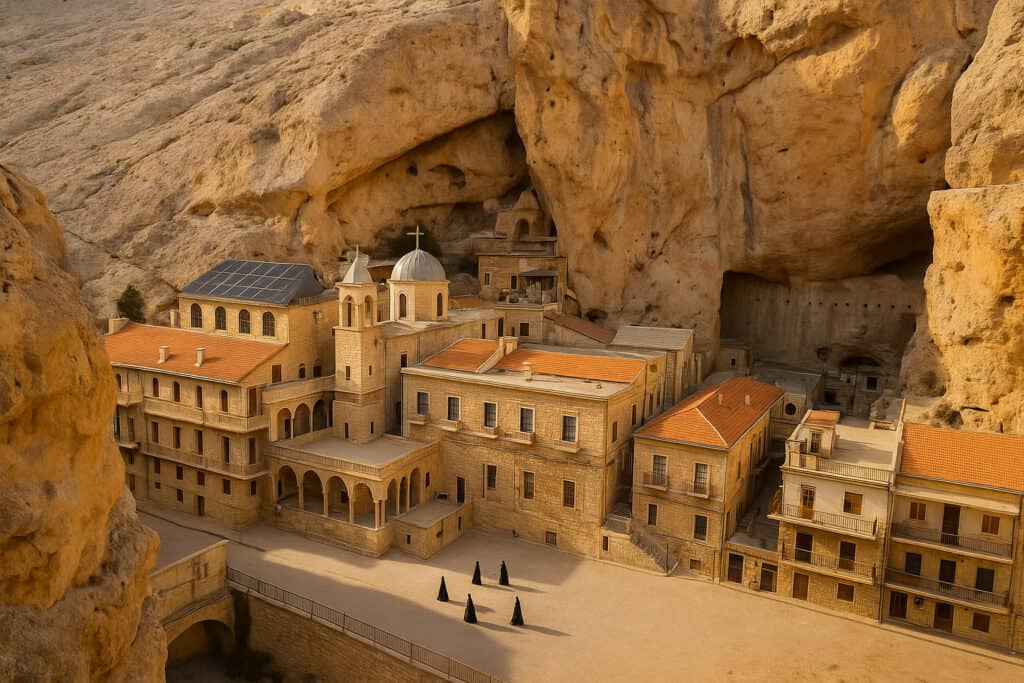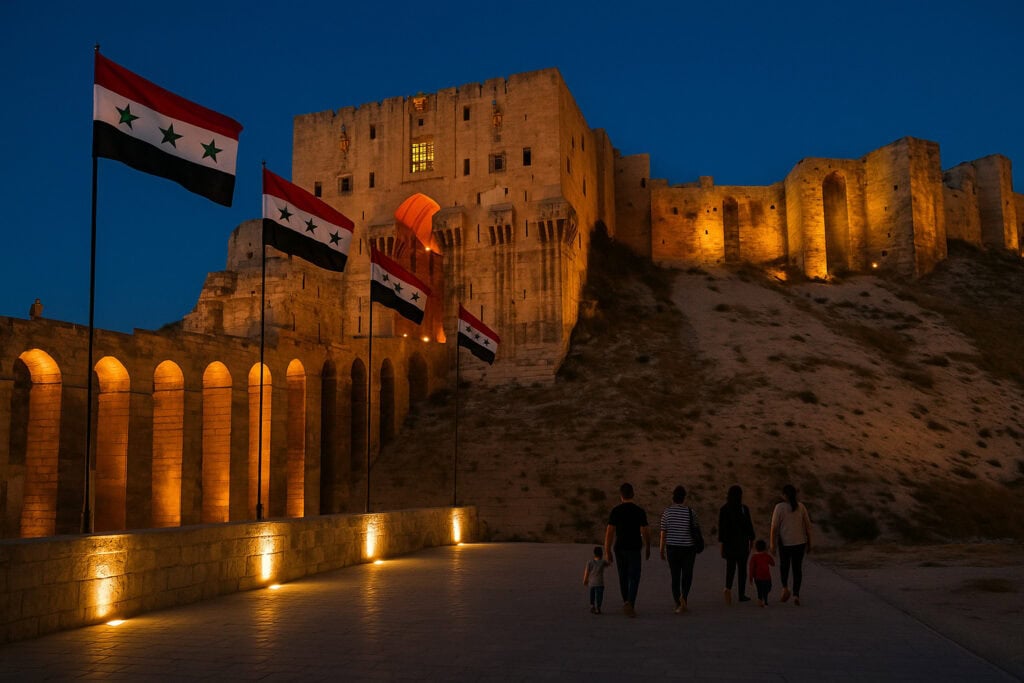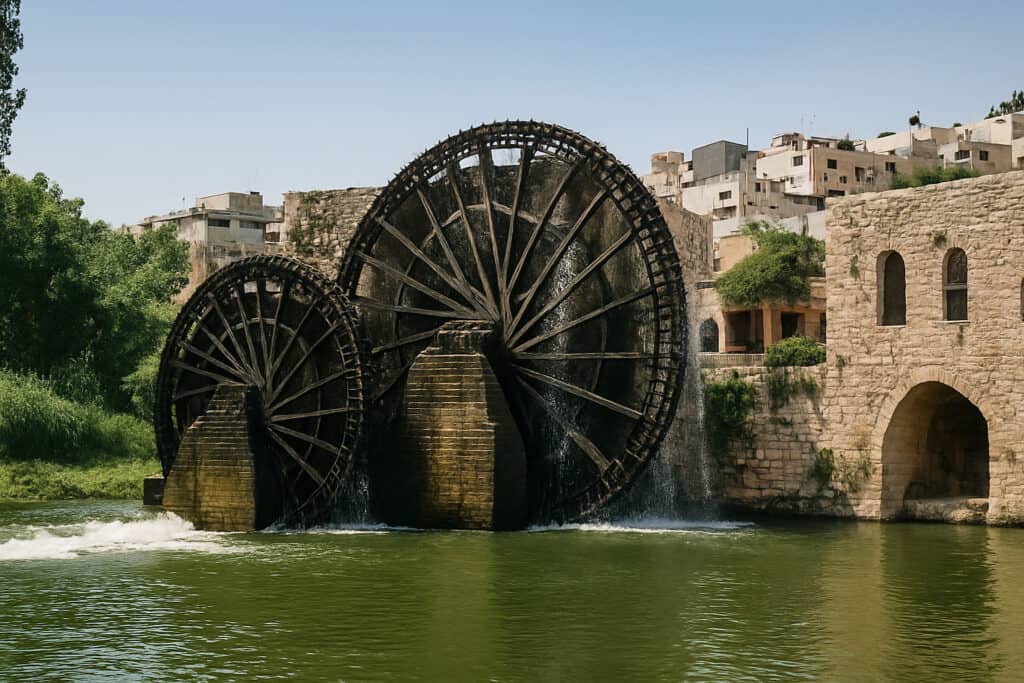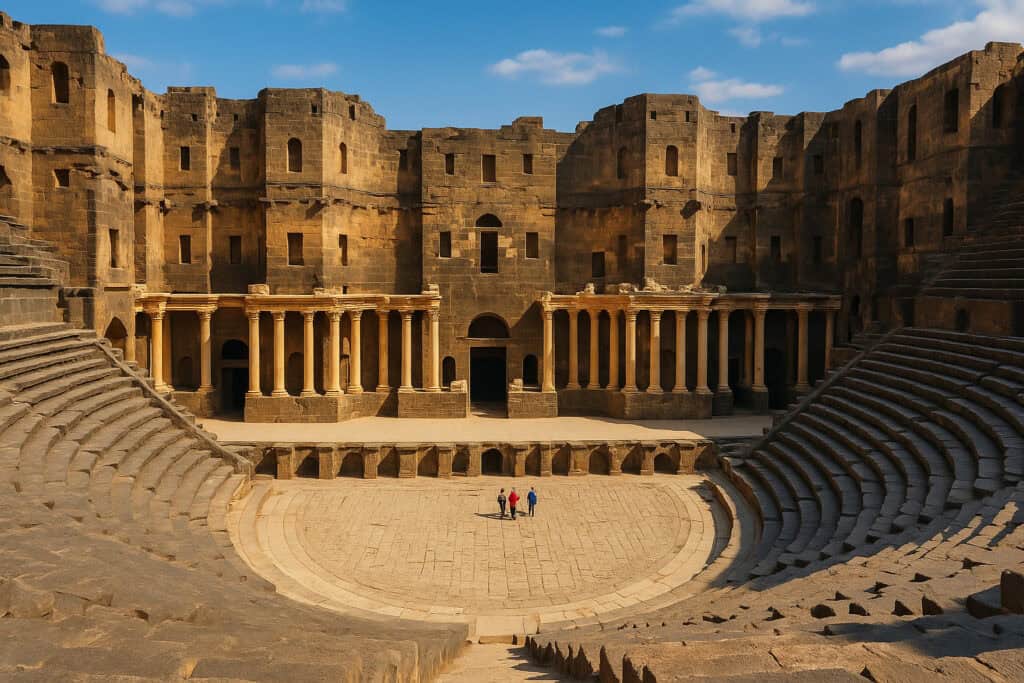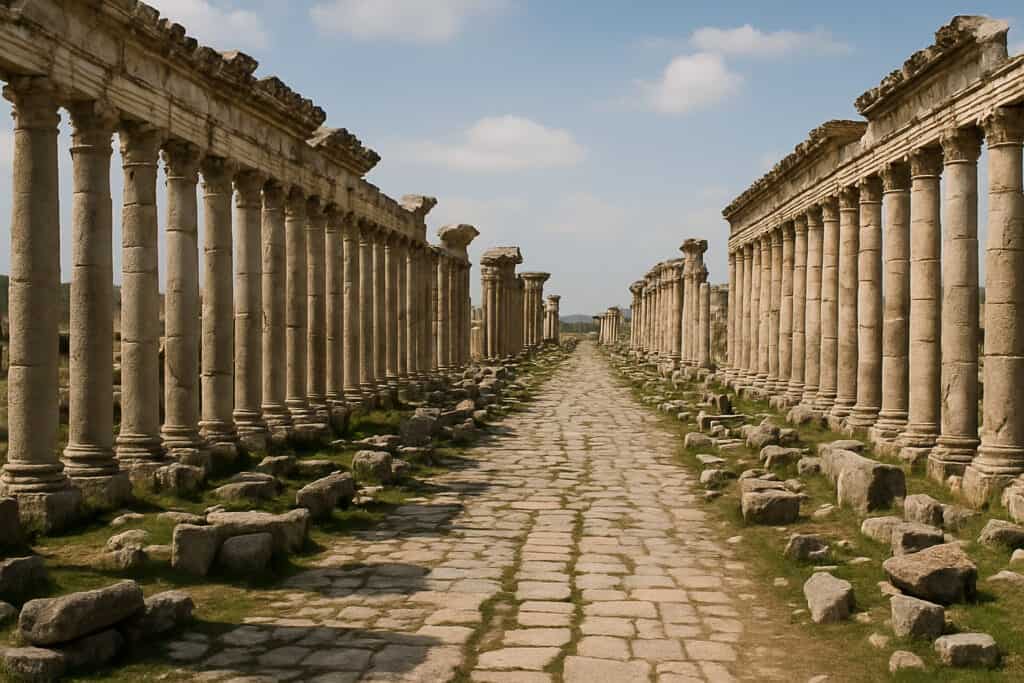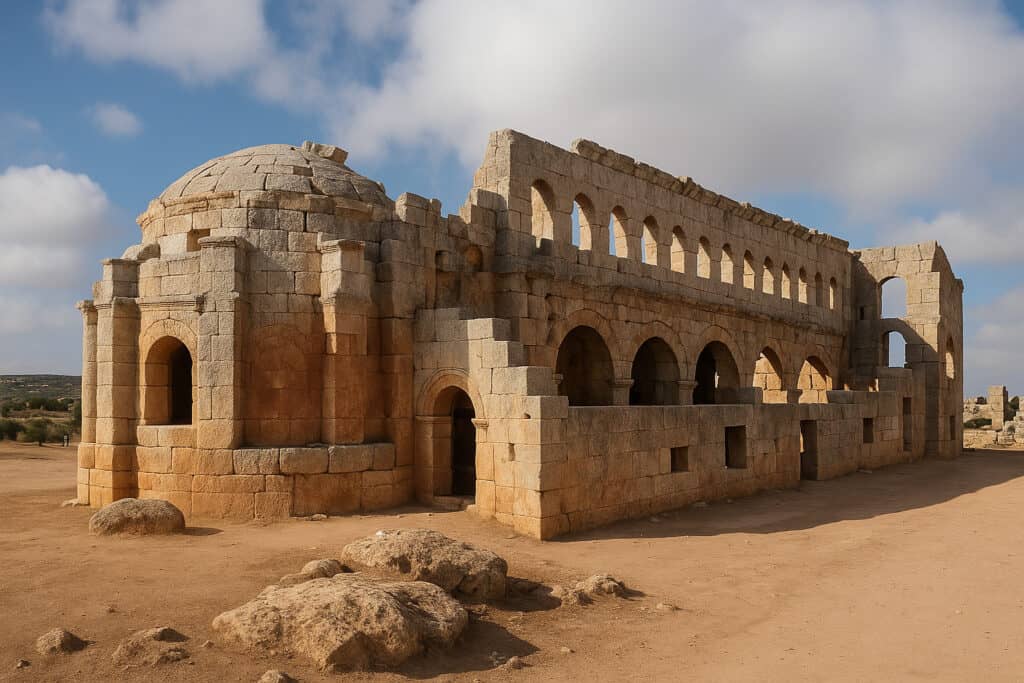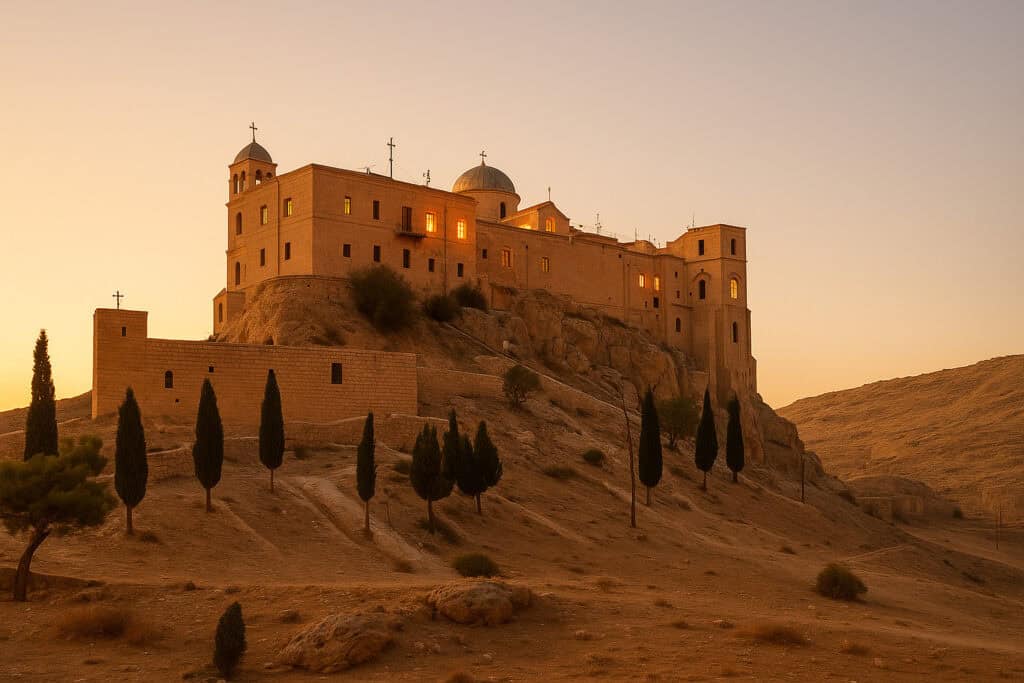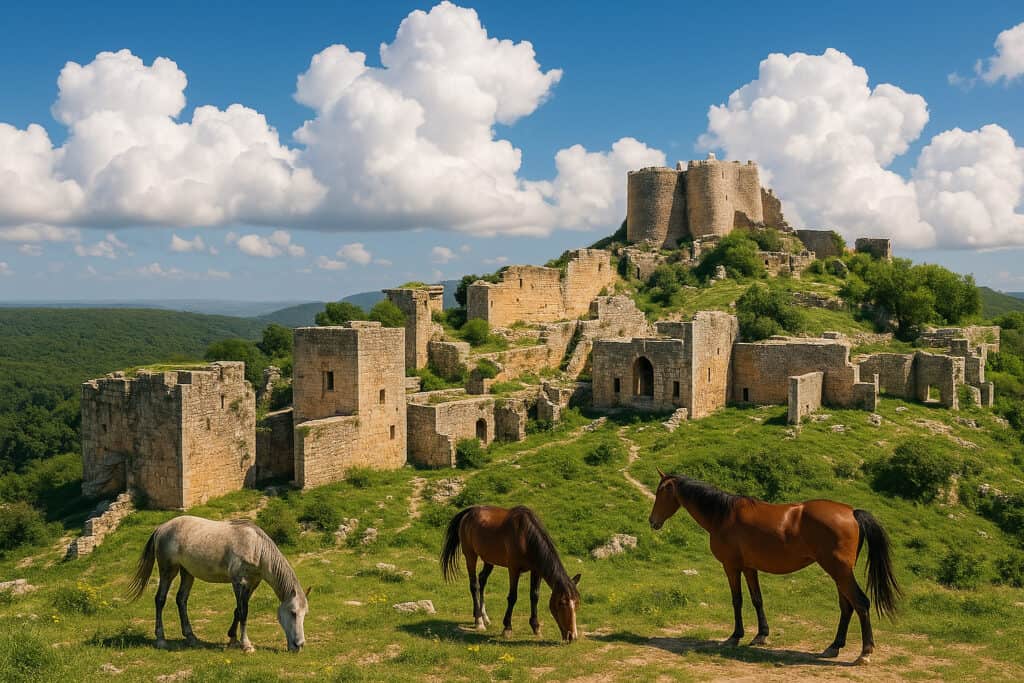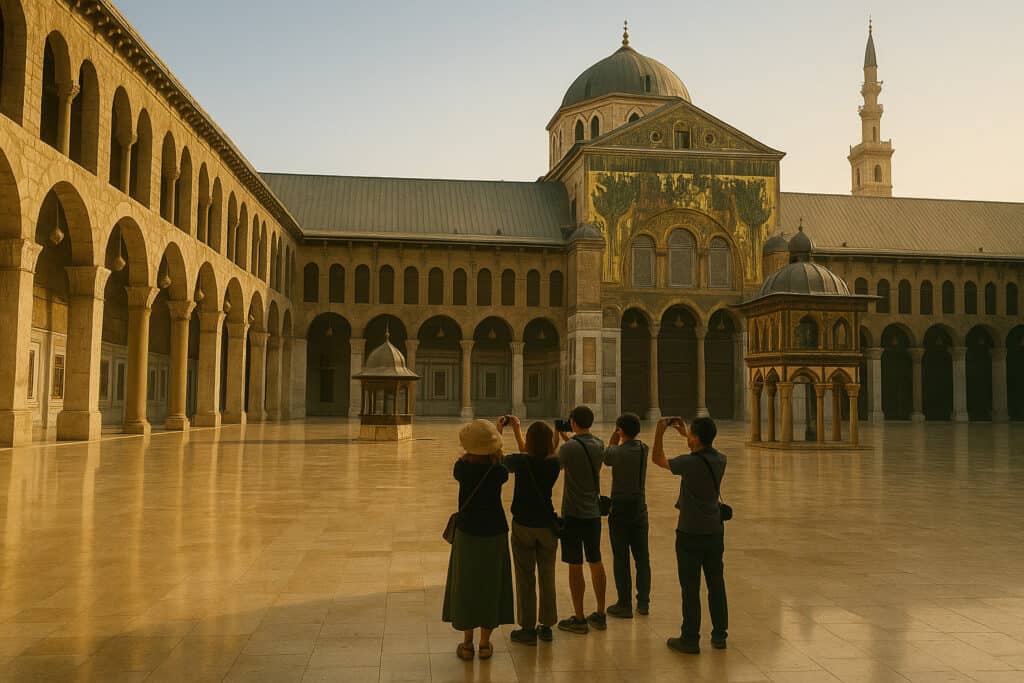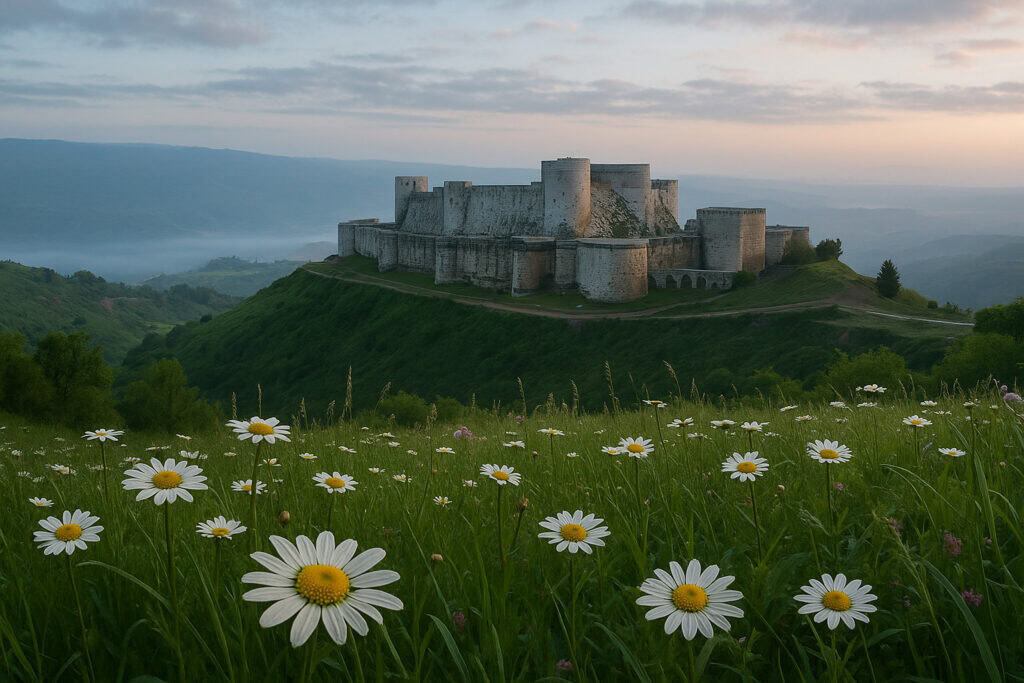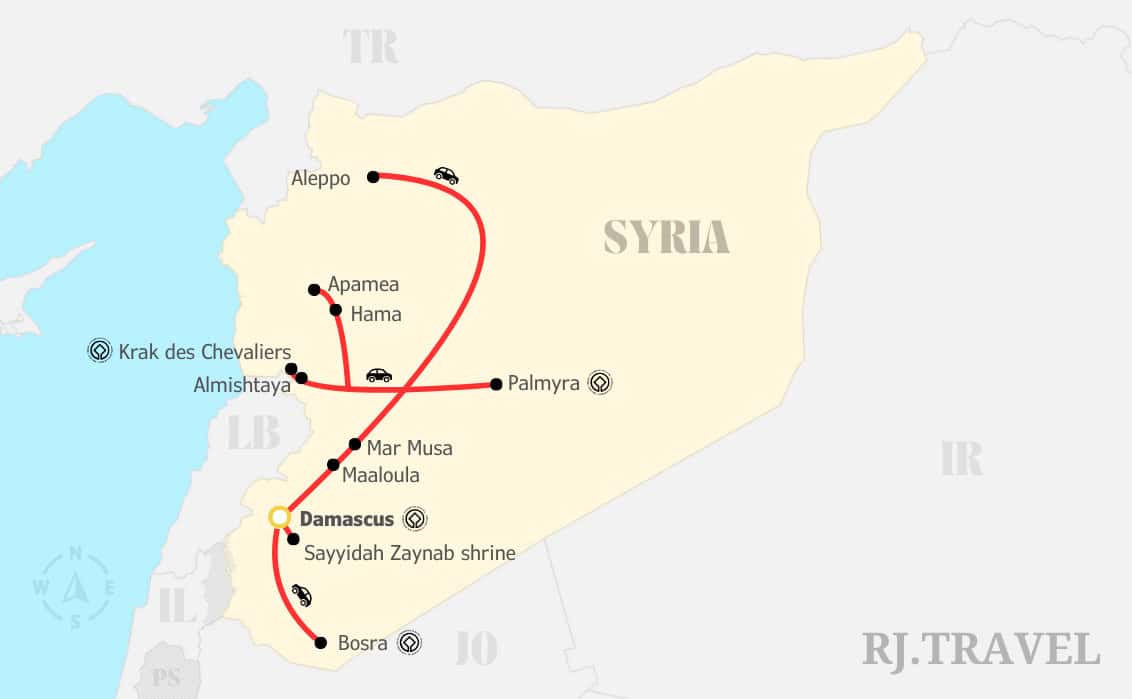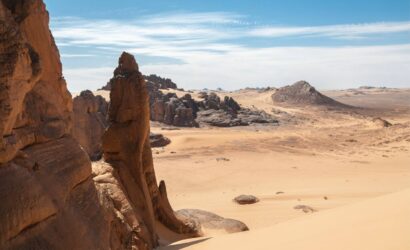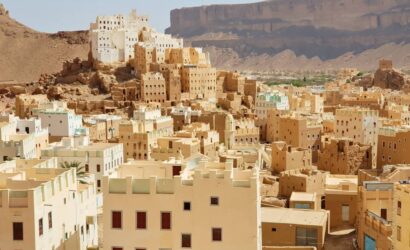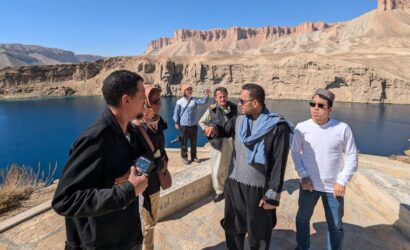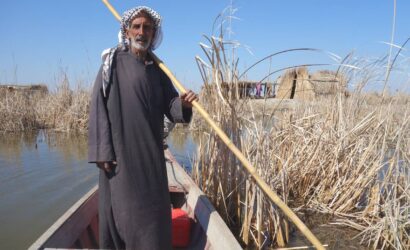From Roman ruins to living Christian villages and Crusader castles, this cross-country route takes you from Damascus through Aleppo, Apamea, and Palmyra, ending at the ancient city of Bosra before returning to Beirut.
Traveling in Syria is always a fabulous experience. Join our group tours now since it is safe to travel to Syria. Don’t miss this opportunity to visit Syria tourist attractions safely. We will pick you up directly at the airport or your hotel. The trip to Syria is very straightforward. Cross the border easily with the Syria tourist visa reference number we offer, so you get your Syria visa on arrival upon payment.
On a trip starting and ending in Beirut, you will visit the great sites of Palmyra, Krak des Chevaliers, Damascus, and Aleppo. These are prime world monuments that are revered by historians and sightseers alike. Being a tourist in Syria is always a great experience. Our destination manager was personally in Syria recently preparing this tour for you. Join our group tours to Syria and travel with our expertise.
⭐ Top 5 Highlights of the Tour:
- Walk through the ruins of Palmyra, one of the ancient world’s greatest desert cities.
- Explore the Aleppo Citadel and Silk Souq, witnessing centuries of layered urban life.
- Visit the Umayyad Mosque and Sayyidah Ruqayya Shrine in Damascus, central to Islamic architecture and Shia devotion.
- Tour Krak des Chevaliers and Apamea, showcasing Roman grandeur and Crusader defense systems.
- Step inside Bosra’s black basalt Roman theater and see how Syria’s southern regions link to ancient Arabia.
Join Our Monthly Guaranteed Departures
No One Left Behind: Guaranteed departures in groups of up to 12 people. The standard price is 1400 USD per person sharing a twin/double room. If there aren’t enough people on our open dates, and you’re the only one booking, there’s a 350 USD extra charge, but the tour won’t be canceled.
This 7-day itinerary through Syria offers a detailed exploration of ancient cities, key religious landmarks, and archaeological sites. Travelers will visit Damascus, Aleppo, Maaloula, Homs, Hama, Palmyra, and Bosra — gaining context into Roman, Byzantine, Islamic, and Crusader history. Each day includes meaningful site visits with a focus on cultural and historical continuity.
Daily itinerary:
- Day 1 » 7am Beirut Morning pick-up » 9am Syrian Border » 11am Hotel check-in » 12pm Damascus (National Museum, Takiyya Suleimaniah Souq, Damascus Citadel, Mount Qasioun Viewpoint)
- Day 2 » Damascus (St Ananias Chapel, Church St.Paul, Zaitoun Church, Maktab Anbar, Khan Assad Basha Caravanserai, Al Azem Palace, Umayyad Mosque, Saladin Mausoleum, Sayyidah Ruqayya Shrine, Al-Hamidiyeh Souq)
- Day 3 » Damascus » Maaloula (Church of Saints Sergios and Bacchos, Eastern Gorge hike, Saint Thecla Convent) » Homs (Um Al Zenar Church) » Idlib (brief coffee and city center walk) » Aleppo
- Day 4 » Aleppo » Church of Qalb Lozeh (Ancient Villages of Northern Syria) » Aleppo (Khan Silk Souq, Old City, Aleppo Citadel, Armenian Forty Martyrs Cathedral, Soap Factory)
- Day 5 » Aleppo » Apamea Ancient City » Hama (Al Jamea Alkabir, Saint George Cathedral, Norias) » Krak des Chevaliers Castle » Al-Mishtaya
- Day 6 » Al-Mishtaya » Palmyra Ancient City » Damascus
- Day 7 » Damascus » Sayyidah Zaynab shrine » Bosra ancient city » 3pm Syrian Border » 6pm Beirut Drop-off (airport/hotel)
✅ UNESCO World Heritage Sites Visited
| Day | Site | UNESCO Inscription Year |
|---|---|---|
| Day 1–2 | Ancient City of Damascus | 1979 |
| Day 3 | Ancient Villages of Northern Syria (Qalb Lozeh) | 2011 |
| Day 4 | Ancient City of Aleppo | 1986 |
| Day 5 | Crac des Chevaliers (part of “Crac des Chevaliers and Qal’at Salah El-Din”) | 2006 |
| Day 6 | Site of Palmyra | 1980 |
| Day 7 | Ancient City of Bosra | 1980 |
🟩 Total UNESCO Sites Visited: 6
🔶 UNESCO Tentative List Sites Visited
| Day | Tentative Site | Tentative Since |
|---|---|---|
| Day 3 | Maaloula | 1999 |
| Day 5 | Apamea (Afamia) | 1999 |
| Day 5 | Norias of Hama | 1999 |
🟨 Total Tentative Sites Visited: 3
📊 Summary
- ✅ 5 of 6 official UNESCO World Heritage Sites in Syria visited
- 🔶 3 of 12 Tentative UNESCO Sites visited
- 🏆 Total of 8 UNESCO-recognized or candidate sites included in just 7 days!
This itinerary is one of the most comprehensive heritage tours currently possible in Syria.
7-day Syria group tour 2025-2026 » Visit Syria best #1
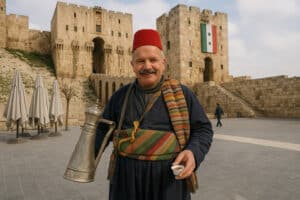
Syria group tour from Beirut 2025 Scheduled Syria small group tours for solo travelers until 12 people » Airport transfers, visa, hotels. breakfast, transportation, English-speaking guides.
Product SKU: SYRG7/BEY/BEY
Product Brand: RJ Travel - Tour Operator
Product Currency: USD
Product Price: 1400
Product In-Stock: InStock
5
-
Beirut
-
Beirut
-
3-star hotels
-
Included
-
SUV, van or Sedan
-
Included
-
Damascus, Palmyra, Aleppo, Krak des Chevaliers, Maaloula, Hama, Homs, Sayyidah Zaynab, Busra al-Sham
7-day Syria itinerary
The tour begins with a 7:00 AM departure from Beirut, heading east toward the Masnaa border crossing. After immigration formalities at the Syrian border around 9:00 AM, the journey continues directly to Damascus, arriving by late morning. Hotel check-in is scheduled for approximately 11:00 AM, followed by a short rest.
By noon, the program resumes with a visit to the National Museum of Damascus, which houses artifacts from prehistoric to Islamic periods, including Ugaritic tablets and Palmyrene tombs. The group will continue to Takiyya Suleimaniah Souq, a 16th-century Ottoman complex known for traditional crafts, and then stop at the Damascus Citadel, a fortified structure first built in the 11th century under the Seljuks and later expanded by Ayyubids. The day ends with a panoramic stop at Mount Qasioun, offering a wide view over Damascus and its surrounding plain.
This afternoon gives an immediate introduction to Syria’s complex layers of Islamic and pre-Islamic history.
Travel Distance & Time: Approx. 140 km – 4 hours total (including border crossing)
5 Key Highlights:
- Cross into Syria via the Masnaa border
- Visit Damascus National Museum with artifacts from multiple civilizations
- Explore Ottoman-era Takiyya Suleimaniah market
- Walk around the fortified Damascus Citadel
- View Damascus from the heights of Mount Qasioun
Important for you:
Seljuk fortifications, Ottoman souq, Palmyrene artifacts
Today begins with visits to several Christian landmarks within Damascus’ old quarter. The first stop is St. Ananias Chapel, built underground in what is believed to be the home of the early Christian convert Ananias. Next, you'll see the Church of Saint Paul, commemorating the location where Paul escaped the city walls. The walk continues through the Christian Quarter to the Zaitoun Church, known for its preserved 18th-century iconography.
The afternoon continues with a visit to Maktab Anbar, a 19th-century Ottoman-era mansion now functioning as a cultural center, followed by the 18th-century Khan Assad Basha, one of the finest caravanserais in the Levant. Afterward, the group visits the Al-Azem Palace, built in 1749 by Ottoman governor As'ad Pasha al-Azem, showcasing Damascene domestic architecture. The day’s centerpiece is the Umayyad Mosque, one of Islam's oldest and most significant mosques, originally built in 715 CE over a Roman temple. Beside it lies the Saladin Mausoleum, where the famed Ayyubid leader is buried. The final stops are the Sayyidah Ruqayya Shrine, a key Shia pilgrimage site, and a walk through the Al-Hamidiyeh Souq, a 600-meter-long market street ending at the mosque's western gate.
This visit helps you see how history, religion, and daily life connect here.
Travel Distance & Time: Local visits in Damascus – minimal driving
5 Key Highlights:
- Visit to St. Ananias Chapel and early Christian sites
- Explore Maktab Anbar and Ottoman merchant architecture
- Entry to the Umayyad Mosque and Saladin’s tomb
- Walk through the old Khan Assad Basha and Al-Azem Palace
- Experience Al-Hamidiyeh Souq’s living commerce
Important for you:
Umayyad architecture, Christian Quarter Damascus, Ottoman Damascus
Leaving Damascus early, the tour travels northeast to Maaloula, a village where Western Aramaic is still spoken. The group visits the Church of Saints Sergios and Bacchos, a 4th-century church built on a former Roman temple. A short walk through the Eastern Gorge leads to the Saint Thecla Convent, built around a cave believed to be her burial place.
From Maaloula, the route continues to Homs, with a stop at Um Al-Zenar Church, an ancient Marian shrine said to be built on the belt of the Virgin Mary. The afternoon includes a brief coffee break and city center walk in Idlib, which has recently reopened for visitors, before continuing to Aleppo for the evening check-in.
You’ll walk through places that still carry the marks of past empires.
Travel Distance & Time: Approx. 370 km – 6.5 hours drive
5 Key Highlights:
- Visit to Aramaic-speaking Maaloula
- Hike through Maaloula’s Eastern Gorge to Saint Thecla
- See the early Christian church of Um Al-Zenar in Homs
- Stop in Idlib for a short orientation walk
- Arrival in Aleppo for overnight stay
Important for you
Aramaic language Syria, Saint Thecla Maaloula, early Christian churches
The day begins with a morning drive to the Church of Qalb Lozeh, located in the Jebel Seman region. Built around the mid-5th century CE, this Byzantine-era basilica is known for its twin-tower façade and architectural influence on later Gothic churches in Europe. The site is part of the UNESCO-listed “Dead Cities” and offers insight into early Christian community life.
Returning to Aleppo, the afternoon explores the city's historic core. The group will walk through the Khan al-Saboun (Soap Khan), part of the Silk Souq, where traditional Aleppo soap is still produced. Nearby, the Armenian Forty Martyrs Cathedral, originally built in the 15th century and rebuilt in 1491, stands as a symbol of Aleppo’s Armenian presence. The tour continues through the Old City, reaching the Aleppo Citadel, one of the oldest continuously used fortresses in the world, with foundations dating back to the 3rd millennium BCE and major expansions under the Ayyubids and Mamluks.
This stop gives context to how ancient trade shaped the region.
Travel Distance & Time: Approx. 100 km – 2 hours drive
5 Key Highlights:
- Visit to the 5th-century Church of Qalb Lozeh
- Explore Aleppo’s Khan al-Saboun and traditional soap production
- See the Armenian Forty Martyrs Cathedral
- Walk through Aleppo’s historic souqs and Old City
- Guided tour of the Aleppo Citadel and panoramic views
Important for you:
Byzantine basilicas Syria, Armenian heritage Aleppo, Aleppo Citadel history
Departing Aleppo early, the route heads southwest to Apamea, a Roman city founded in the 3rd century BCE and rebuilt under Seleucid and Roman rule. The site features a grand colonnaded street over 2 kilometers long, once lined with shops, temples, and civic buildings. Excavations have revealed mosaics and sculptures from the Roman and Byzantine periods.
The journey continues south to Hama, where the group will visit the Al-Jamea Al-Kabir, a large Umayyad mosque, and the Saint George Cathedral, showcasing the city’s Christian-Muslim coexistence. Hama’s Norias (giant wooden waterwheels) date back to the medieval Islamic period and were used to irrigate nearby fields via aqueducts.
The final site of the day is the Krak des Chevaliers, the most intact Crusader castle in the region. Built by the Knights Hospitaller in the 12th century and expanded through the 13th, it features defensive walls, vaulted halls, and Gothic-style chapels. The group ends the day in the nearby village of Al-Mishtaya for overnight rest.
This day connects Syria’s Roman past with its medieval defensive legacy.
Travel Distance & Time: Approx. 300 km – 5.5 hours drive
5 Key Highlights:
- Walk the Roman colonnaded street of Apamea
- Visit historic mosques and churches in Hama
- Observe the medieval Norias of Hama
- Tour Krak des Chevaliers Crusader Castle
- Overnight stay in Al-Mishtaya village
Important for you:
Roman ruins Apamea, Hama Norias, Crusader castles Syria
After breakfast, the group departs for Palmyra, once a vital caravan city linking the Roman Empire with Persia and Central Asia. Located in the desert, Palmyra flourished under Queen Zenobia in the 3rd century CE before falling to Emperor Aurelian. Key structures visited include the Temple of Bel, the Colonnaded Street, Funerary Towers, and the Roman Theatre, with ongoing restoration efforts visible throughout the site.
Following time to explore the ruins, the group returns to Damascus by late afternoon. The journey south cuts across semi-arid landscapes and small desert towns.
This visit helps illustrate how ancient trade and empire met in the Syrian desert.
Travel Distance & Time: Approx. 260 km – 4.5 hours drive
5 Key Highlights:
- Explore the desert ruins of Palmyra
- Visit the Temple of Bel and Roman Theatre
- See ancient funerary towers and colonnades
- Learn about Queen Zenobia’s brief empire
- Return to Damascus for overnight
Important for you:
Palmyra Roman city, Queen Zenobia Syria, Syrian desert archaeology
The day starts with a visit to Sayyidah Zaynab Shrine, an important Shia pilgrimage site located just south of Damascus. The mosque, rebuilt in the late 20th century with gold and blue tilework, holds the tomb of Zaynab, granddaughter of the Prophet Muhammad.
The tour then proceeds southeast to Bosra, once the capital of the Roman province of Arabia. The site includes a remarkably preserved Roman Theatre, built in the 2nd century CE and later converted into a citadel by the Ayyubids. Other ruins include early Christian churches, Nabataean remnants, and sections of the Decumanus Maximus.
By early afternoon, the group heads back to the Syrian–Lebanese border for the 3:00 PM crossing and continues to Beirut, arriving around 6:00 PM for drop-off at the airport or hotel.
This day brings the journey full circle with insights into both Islamic devotion and Roman governance.
Travel Distance & Time: Approx. 320 km – 6 hours (including border)
5 Key Highlights:
- Visit the modern Sayyidah Zaynab Shrine
- Explore the Roman Theatre and ruins of Bosra
- See a mix of Roman, Nabataean, and Islamic structures
- Cross back into Lebanon via the Syrian border
- Return to Beirut by evening
Important for you:
Sayyidah Zaynab pilgrimage, Roman theatre Bosra, Nabataean ruins Syria

